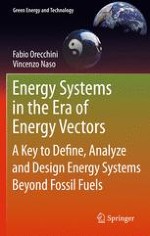
2012 | OriginalPaper | Buchkapitel
1. Energy Systems
verfasst von : Fabio Orecchini, Vincenzo Naso
Erschienen in: Energy Systems in the Era of Energy Vectors
Verlag: Springer London
Aktivieren Sie unsere intelligente Suche, um passende Fachinhalte oder Patente zu finden.
Wählen Sie Textabschnitte aus um mit Künstlicher Intelligenz passenden Patente zu finden. powered by
Markieren Sie Textabschnitte, um KI-gestützt weitere passende Inhalte zu finden. powered by